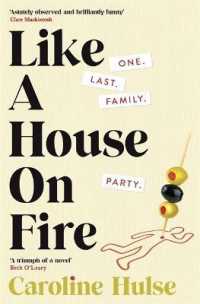Full Description
Designing for Kids helps design students and professionals dive deeply into building a child-centered design practice, providing them with the knowledge, skills and tools to create products with a positive impact on child development, learning, play, and well-being.
This fully updated second edition incorporates current and emerging childhood research and analysis that impacts the design process. It includes topics such as digital technology and AI, mental health, identity, climate change, sustainability, and children with disabilities. It supports college classes, company onboarding, and professional settings where young people are the end users of products and designed experiences. In addition to insights from professional designers, this edition also includes interviews with child psychologists, and diverse case studies from North America, South America, Africa, Asia, Europe, Australia and New Zealand from various industries and contexts. From these, readers will learn updated design approaches and how incorporate them into their work to create products and services for a global market. This textbook offer readers more than 150 color images, helpful discussion questions, practical frameworks, skill-building assignments, and debate questions that have been tested in conference workshops, colleges, nonprofits, and corporations.
It is written for product designers who want to build more play value into toys, furniture, or schools; architects designing regenerative playgrounds, museum exhibits or children's hospitals; and technologists seeking ethical and educational approaches to interactive games and learning systems. Readers will build a strong foundation in designing for and with children, learning how to create developmentally appropriate and culturally relevant designs. This book will provide the skills and foundational understanding of how to design impactful products, services, and experiences that spark joy and support young people to thrive.
Contents
Part 1. The Design Process 1. The Research and Design Process Part 2. Child Development 2. Development Stages 3. Physical Development 4. Cognitive Development 5. Social and Emotional Development Part 3. Childhood Today 6. Play 7. Education 8.Children's Spaces 9. Media and Technology



![Studio [21] - Grundstufe - A2: Gesamtband : Intensivtraining - Mit Audio-CD und Extraseiten für Integrationskurse. Deutsch als Zweitsprache (Studio [21]) (2015. 112 S. 29.6 cm)](../images/goods/ar/work/imgdatak/30652/3065203812.jpg)



